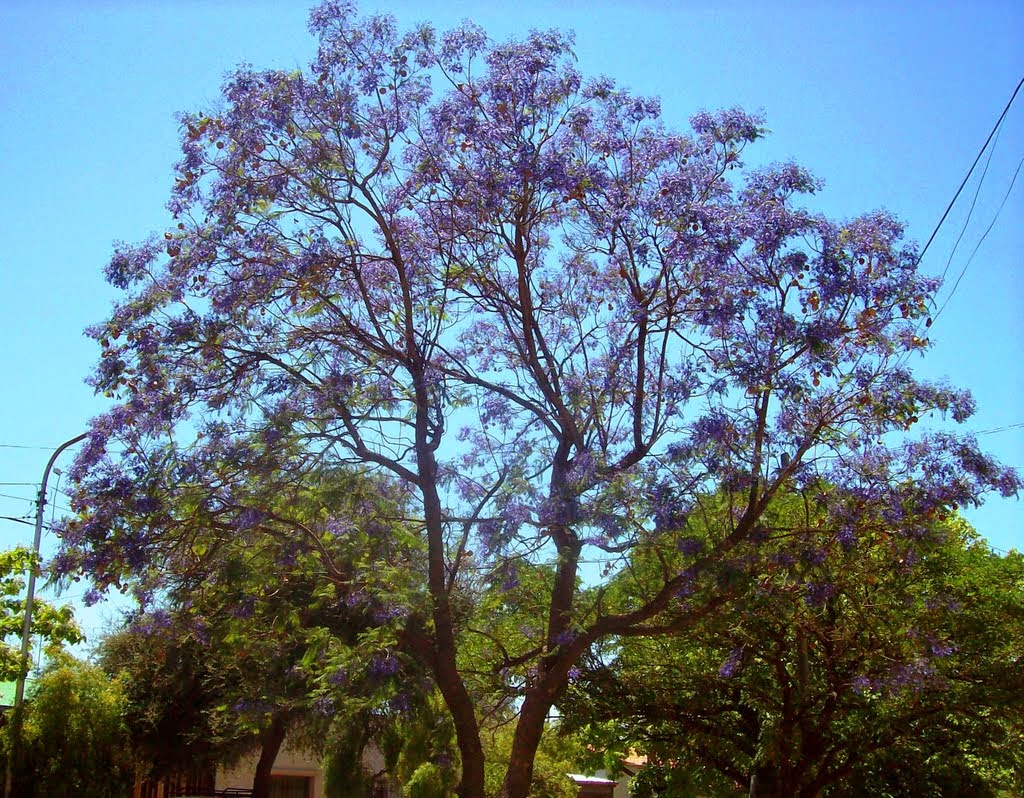As I walked through San Rafael yesterday I noticed that the
majestic old jacaranda which grows in a street park near the reconstructed
Mission was blooming. The mysterious, spicey scent of the blue trumpet-flowers
opened up in the hot, sunny afternoon, but the thick branches made a heavy
shade and under the tree fallen blue flowers carpeted the grass.
I haven’t lived with many jacarandas, so each has been
special. The first was in North Oakland, in a residential neighborhood which I passed
through each day on my way to work. I struggled with the name jacaranda, which
was pronounced with the ‘j’ sounding more like an ‘h.’ Its origins are lost in
time, but is believed to be from a Guarani (an indigenous
language of South America) word meaning ‘fragrant’. I especially enjoyed the
few weeks in early summer when it bloomed.
Toward the end of those years, I talked to the owner of the
tree. She threatened to cut it down as its roots were upending the concrete
sidewalk. She was older and had no money to pay for insurance claims. So sad, I
thought. Then I worked in Los Angeles for a few weeks in spring and found
little ornamental forests of jacarandas on the plaza levels above the downtown
streets.
Place is so important to all of us. Jacarandas don’t grow
everywhere. Here the coastal morning fog cools us each night and clear, bright
days are leaving us a very dry summer. But we are listening to the predictions
of an El Niño which scientists perceive developing off the Pacific coast and
hopeful that winter rains will alleviate our drought. I have long felt much
more related to the rim of the Pacific than to Europe. Does this affect my
writing, I ask myself.
When a Japanese-born friend tells me she is reading a lot of
the Shishōsetsu, or I-novels written in Japanese, I research these and find
that they are a particular genre in which writers used the events of their own
lives for their subjects. Beginning in the early 20th century, the
writers wished to portray a realistic view of the world involving real
experiences, often showing the darker side of society. Except for the realism
involved, this did not sound like my work.
But then I found that Gish Jen, a contemporary American-born
Chinese writer, has written a book entitled Tiger Writing, about the
“profound difference in self-narration that underlies the gap often perceived
between East and West.” She believes that the novel is essentially a Western
form that values originality, authenticity and the truth of individual
experience, while Eastern narrative emphasizes morality, cultural continuity,
the everyday, the recurrent.
I’ve had trouble thinking of the stories about the Mikkelson
kids as a series of novels, though by some definitions, the novel is such a big
envelope it can contain almost any kind of fiction. My work is certainly about
“cultural continuity, the everyday, the recurrent.” It’s about family and how
our personal and public lives interact, with emphasis on the private aspects.
In the end, of course, I am not the one to say what the books become. I must
just write them and hope that they eventually find their audience.



No comments:
Post a Comment